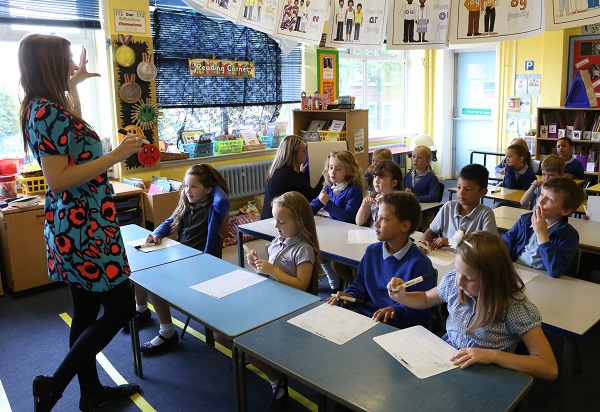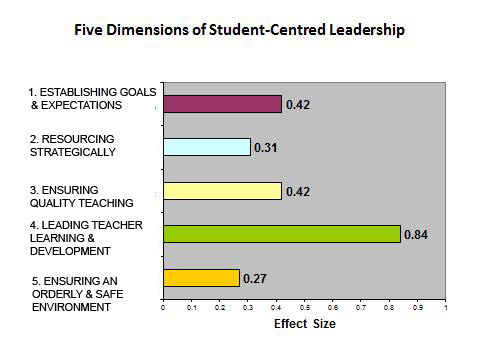How well do you know your school, and how well do your staff know you? Here's why schools need visible leaders.

Are you a leader wanting to improve outcomes in your school? Well, a good bet would be focusing on teacher learning.
Viviane Robinson led an analysis of 30 research studies on the relationship between school leadership and pupil outcomes, which then made into the New Zealand ministry of education's best evidence synthesis. The finding: leading teacher professional learning and development is probably the most effective thing you can do as a leader to improve pupil outcomes.

If leadership is the second biggest factor on pupils' learning in schools and classroom teaching is first, a form of leadership that prioritises what happens in the classrooms is likely to prove highly effective.
But what does leadership that focuses on teachers' learning in order to boost classroom impact look like?
Well partly, I think, it means that leaders need to be visible.
Here I've reproduced some ideas from Jane Golightly written for the Optimus Education Knowledge Centre. For many more ideas and practical resources about leading professional development, you can download the CPD leadership toolkit.
-------------------------------------------------------------------------------------------------
Leaders need to be seen and heard. Staff take their cue from the leaders, for better or worse. Every day you are modelling professional behaviours, responses and attitudes. If you model through your behaviours and habits that the children matter and that their learning, progress, standards are important, they will be important for everyone.
But this doesn't just mean being seen.
There is a view held by some school leaders that being a visible leader means walking around the school in the morning, having coffee with staff at break and covering lessons. This is all well and good, but truly visible leaders place their emphasis on different activities.
They make every effort to get to know their school and the community it serves. Importantly, children are keen to talk to them. When these leaders go into classes, it isn't to judge or criticise - the emphasis is on the learning of pupils over time, and not the one-off performance of an observed lesson.
Visible leaders also understand the importance of reciprocal vulnerability: they don't only show their best sides to their teachers, but talk about times when their teaching didn't work out. Showing your vulnerability doesn't make you weaker as a leader: it shows that you, too, are learning.
Visible leaders who have deep knowledge of their school know not only about expectations and progress of cohorts and groups of pupils, but also about the progress and attainment of individual children.
They pay particular attention to the progress of vulnerable children and will pull out all stops to ensure that everyone plays their part in supporting all children to achieve the best they can. Pupil progress meetings are prioritised and the visible leader makes sure that he or she checks that what was agreed for individual pupils is taking place.
Visible leaders stay close to learning and teaching and know what happens in classrooms. They may still teach a class themselves, and their information about children’s learning comes from a broad range of sources including performance management, classroom observations, scrutiny of work, talking to children about their learning, talking to staff (individually and collectively) about learning and teaching and so on.
Leaders who want to know their school don’t wait for Ofsted to tell them things
What I like best of all is that visible leaders are up to date with what children in each year group are learning. So, when they meet a child from Year 5 in the corridor they can talk to him about the novel that Year 5 are reading together.
Leaders who want to know their school don’t wait for Ofsted to tell them what they should have found out for themselves.
The views of the school community do not always make easy listening and reading, and it’s not always straightforward to scrutinise systems and leadership structures in the school to make sure that they are doing the job they are expected to do.
But the visible leader grasps that the views of others as opportunities to learn what is going well, what is going less well and what could be better. For staff, it makes a real difference to work with a leader who is truly interested in what they do, and what happens in the classroom.
Take the opportunity to view data such as recruitment and retention figures as valuable information. What does your staff turnover tell you about your school culture?
Our first responsibility as school leaders is to bring about improvement for all children and we can only do this if we know the children and school inside out - and make sure they know us too.